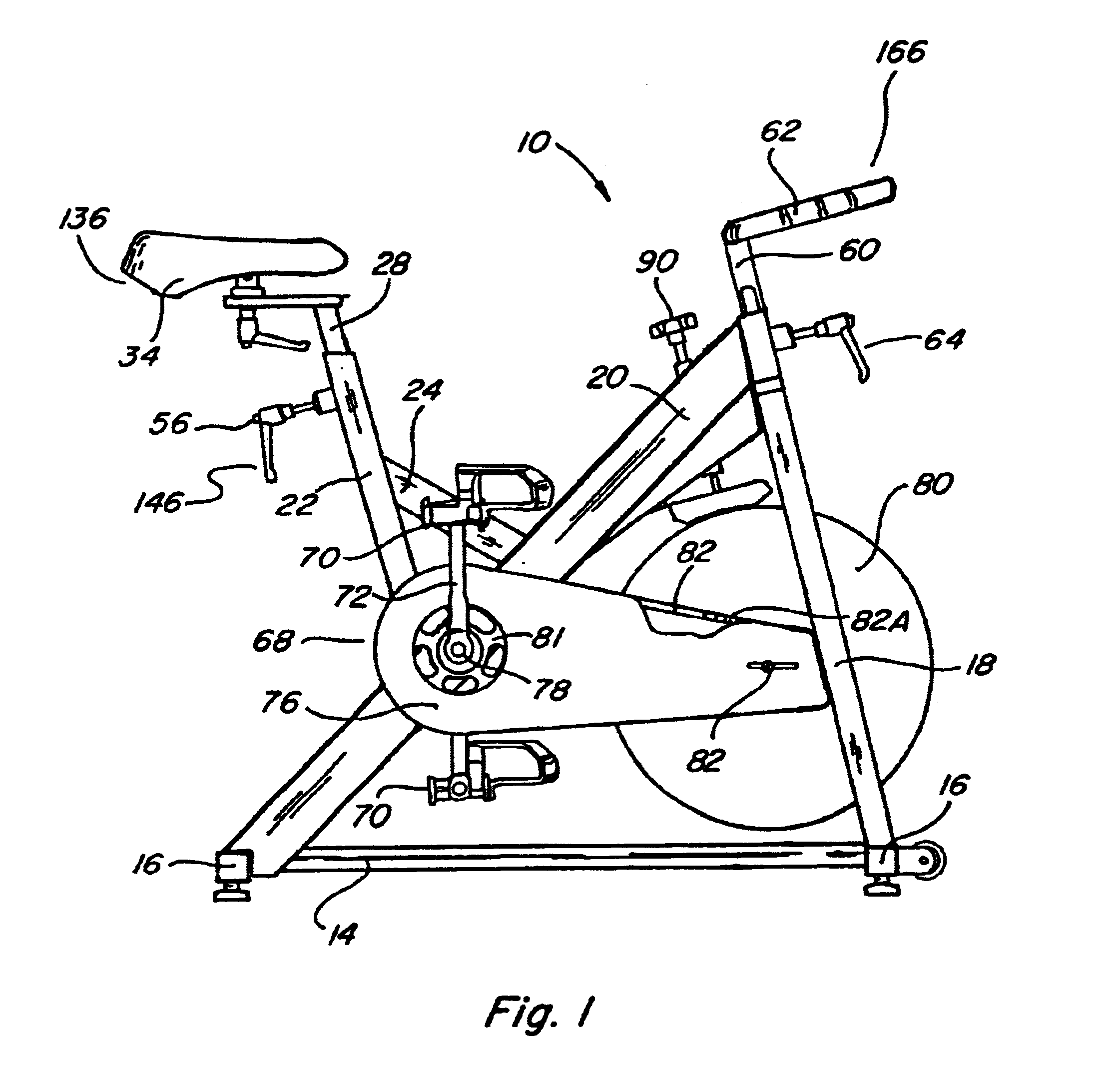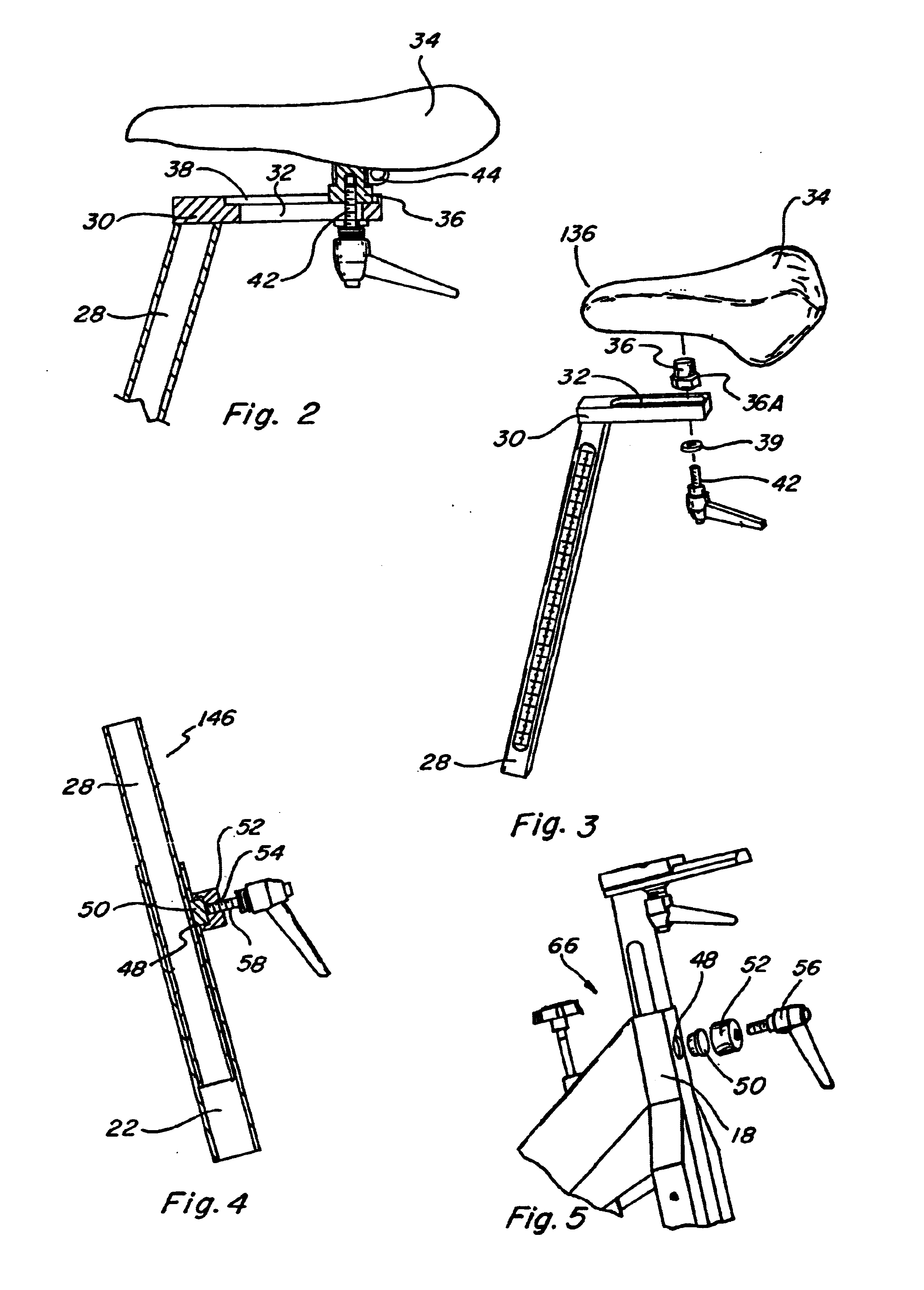Stationary exercise bicycle
a stationary exercise and bicycle technology, applied in the field of stationary exercise bicycles, can solve the problems of inability to provide realistic resistance and ride simulation, inability to provide the rollers used to support the rear wheel have stability and slippage problems, so as to reduce maintenance, increase reliability, and smooth cycling feel
- Summary
- Abstract
- Description
- Claims
- Application Information
AI Technical Summary
Benefits of technology
Problems solved by technology
Method used
Image
Examples
Embodiment Construction
Referring now to FIG. 1, there is shown, in an elevation view, a stationary exercise bicycle 10 in accordance with a preferred embodiment of the present invention. The bicycle 10 has a frame which includes a base section 12 which includes a base longitudinal tube 14 and a pair of base transversal tubes 16. The transversal tubes 16 are rigidly attached to the base longitudinal tube 14, typically, at opposed ends thereof. A front support tube 18 extends upwardly from the base longitudinal tube 14 adjacent the first end thereof. The front support tube 18 is, preferably, angled relative to the base longitudinal tube 14 so as to extend slightly towards the rear portion of the bicycle 10.
A structurally strong main support tube 20 is joined to and extends upwardly from the rearward portion (or end) of the base longitudinal tube 14. The support tube 20 intersects with and is joined to an upper portion of the front support tube 18.
A rear support tube 22 is joined to and extends upwardly from...
PUM
 Login to View More
Login to View More Abstract
Description
Claims
Application Information
 Login to View More
Login to View More - R&D
- Intellectual Property
- Life Sciences
- Materials
- Tech Scout
- Unparalleled Data Quality
- Higher Quality Content
- 60% Fewer Hallucinations
Browse by: Latest US Patents, China's latest patents, Technical Efficacy Thesaurus, Application Domain, Technology Topic, Popular Technical Reports.
© 2025 PatSnap. All rights reserved.Legal|Privacy policy|Modern Slavery Act Transparency Statement|Sitemap|About US| Contact US: help@patsnap.com



